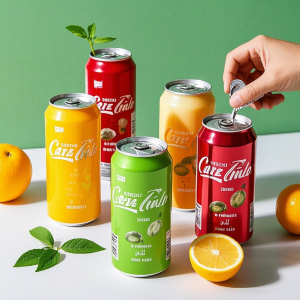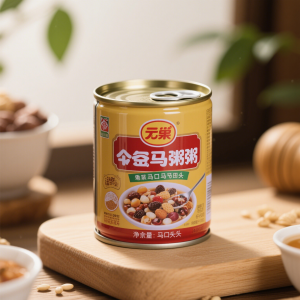aluminum cans are a common sight in our daily lives — from the colorful shelves of supermarkets to the chilled compartments of refrigerators, you’ll find them used for everything from carbonated drinks to beer. Today, the Erjin team would like to walk you through the differences between two-piece and three-piece cans. Once you understand the key distinctions, you’ll be able to choose the can type that best suits your needs.
1. Structural Composition
Two-Piece Can: Consists of two parts — a seamless, integrated body (including the base) and a separate lid.
Three-Piece Can: Made of three separate parts — body, base, and lid — which are assembled together. The body has a visible seam (joined by welding or adhesive).
2. Manufacturing Process
Two-Piece Can: Formed by stamping and drawing a metal sheet (usually aluminum alloy) into a single piece with a base. This process is simpler and offers better sealing.
Three-Piece Can: The body, base, and lid are produced separately. The body is joined at the seam using welding (resistance or laser welding) or adhesives, and then sealed with the base.
3. Material Differences
Two-Piece Can: Typically made from aluminum alloy, which has excellent ductility, making it ideal for deep drawing processes.
Three-Piece Can: Commonly made from tinplate (tin-coated steel), which has higher rigidity and supports more complex shapes.
4. Performance and Application
Advantages of Two-Piece Cans:
Sealing: Seamless design with high pressure resistance, ideal for carbonated drinks and beer.
Production Efficiency: Fewer steps and higher material utilization.
Advantages of Three-Piece Cans:
Flexibility: Suitable for customized shapes (e.g., eight-treasure congee cans) and a wide variety of packaging types.
Corrosion Resistance: The interior tinplate is coated with epoxy-phenolic resin, making it suitable for acidic beverages like juice.
5. Environmental and Economic Factors
Two-piece cans, made from recyclable aluminum, are less affected by material recovery rates.
Although the three-piece can process is well-established, it consumes more energy, and lead-based soldering methods are being phased out for environmental reasons.
Two-piece cans are typically aluminum-based, seamless, and known for excellent sealing — making them ideal for carbonated drinks. Three-piece cans, made from tinplate, offer flexibility in shape and are better suited for acidic or specialty products. The two types complement each other in the beverage packaging industry.For more information about aluminum cans, feel free to contact us at info@erjinpack.com.
Erjin is a global distributor and packaging solutions company with brand planning, packaging design and manufacturing, filling services as the core, dedicated to the research and development, design, production and sales of food and beverage metal packaging products, with more than six workshops in China.
We adhere to the path of innovation-driven sustainable development, deeply promote differentiated products, and provide customers with “intelligent, differentiated and integrated” intelligent packaging services.
We will firmly practice green development and continue to explore green, environmental protection, scientific and sustainable development models from the whole life cycle of materials, design, production and recycling.
Post time: Jun-19-2025








